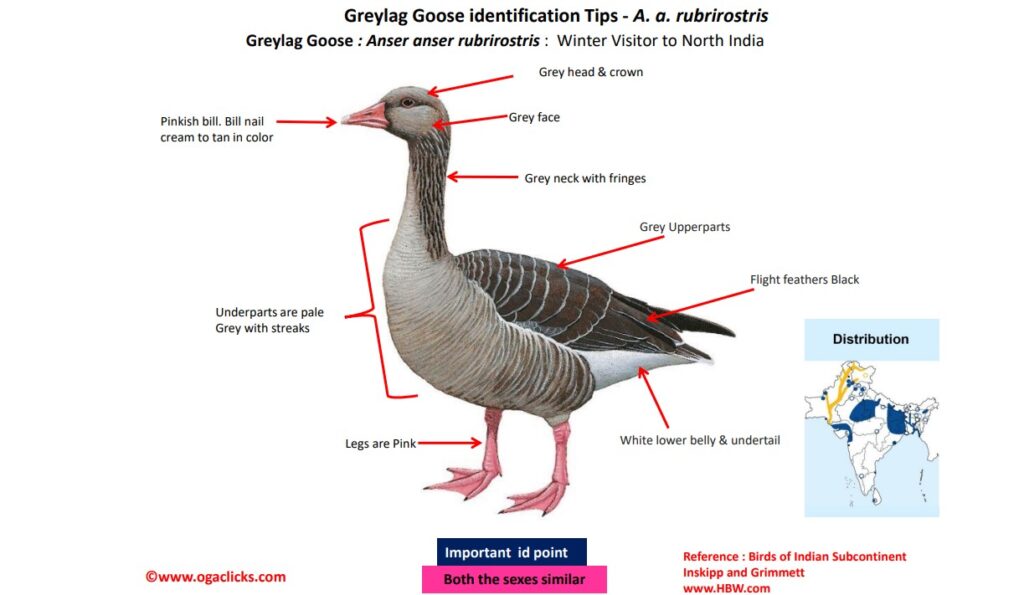Greylag Goose

Greylag Goose Anser anser
Etymology:
- Anser : Latin word for Goose
- Anser : Latin word for Goose
Vernacular Names : Sind: Hanj, Hindi: Sona, Karria sona, Hans, Bada sawan, Sans: Kalhans, Pun: Bhoora magh, Bi: Kaj, Kallauk, Khar hans, Ben: Raaj hans, Ass: Raaj hanh, Dhitraj, Mani: Kang nga, Nepal: Mogala, Mogala battak, Guj: Gaj hamsa, Raajhans, Kutch: Gaj, Mar: Shyam kadamb, Kalhans Ori: Hansa.
Distribution in India: Winters in North and Central India.
Description: Size of 75-90 cm. It is the largest and bulkiest of the grey geese of the genus Anser, but is more lightly built and agile than its domestic relative. It has a rotund, bulky body, a thick and long neck, and a large head and bill. It has pink legs and feet, and an orange or pink bill with a white or brown nail. The plumage of the Greylag goose is greyish-brown, with a darker head and paler breast and belly with a variable amount of black spotting. It has a pale grey fore-wing and rump which are noticeable when the bird is in flight or stretches its wings on the ground. It has a white line bordering its upper flanks, and its wing coverts are light-colored, contrasting with its darker flight feathers. Its plumage is patterned by the pale fringes of the feathers. Both Sexes similar but the Male is larger than the female.
Habitat: It is found in variety of habitats generally associated with water in open country, often with fringe vegetation or near grasslands. Winters on farmland in open country or in swamps, lakes and coastal lagoons.
Food Habits: They eat grass, roots, leaves, stems, seed heads, fruits and sprouts of wide variety of plants, complemented in winter with grain, potatoes and other vegetables. Forages mainly on land, by grazing, but also on water, where it sometimes upends or submerges head, and by probing in mud and pulling at stems of exposed roots. Mainly feeds diurnally, especially in morning and afternoon but the non-breeders will feed nocturnally to avoid predation.
Breeding Habits: They breed across Europe during March- May. Long-term monogamous pair-bonds. Breeds often in loose colonies, typically close to potential feeding sites; female builds shallow nest of reed stems and grass, lined with down feathers, among reed beds or in trees , even on ledges of steep rocky slopes or escarpments. They lay a clutch of 4–6 eggs, laid at 24-hour intervals. The incubation period is 27–28 days by female alone, commencing with final egg; chicks hatch synchronously and are Precocial; families swiftly aggregate into large groups. The fledging period is 50–60 days and families thereafter remain together into winter.